Nothing in Basket!
Like most people with busy lives I didn't notice the lack of birds in my garden until I watched a wildlife program. Although I had enjoyed bird watching when I was a child, nature was soon forgotten once I started my working life.
I decided it was time to do something about it. My first attempt fell flat on it's face. I installed bird feeders into my tiny square town garden but the birds didn't come. I added some small bushes, and I was eventually rewarded with a few blue tits and great tits visiting on a daily basis.
Thankfully I was able to leave the rat race behind and moved to a suffolk village between farmland and forest, it was far easier attracting the birds this time. After a number of changes I soon had a wider variety of birds, as well as, insects, bees, wasps, deer and hedgehogs visiting on a regular basis.
I'm no expert on birds, but this is what I did to successfully attract birds to my garden, if I can do it anyone can.
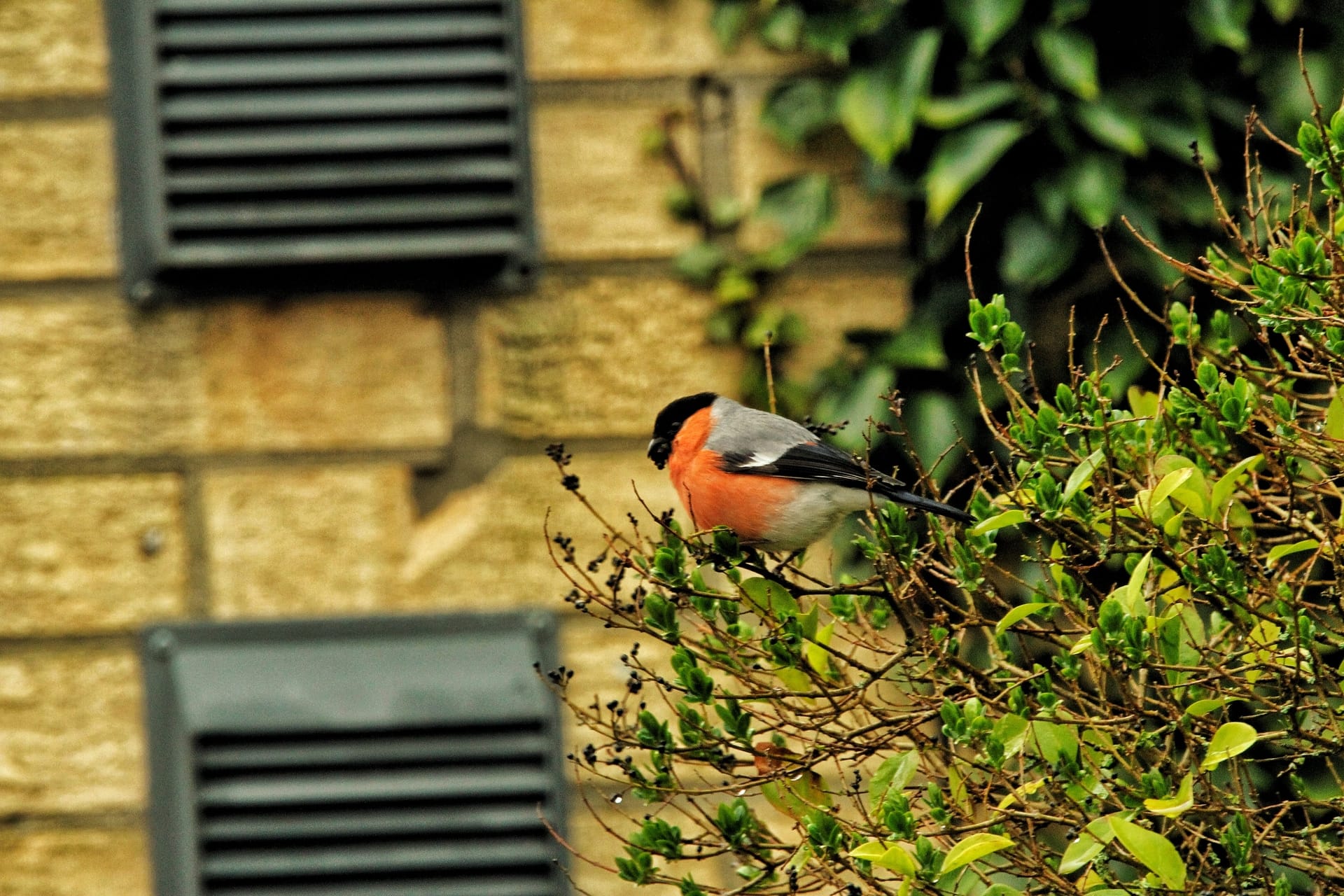
Bullfinch eating berries from a privet hedge in our garden
The birds didn't come into my town garden until I had bushes and a few ground covering plants. It took two years for the shrubs to create enough cover before the birds became comfortable staying and using the feeders.
When I moved to a village which is situated between forest and farmland I figured it was going to be a lot easier encouraging the birds to use my garden, which at the time was bare, half paved, half grass with one berry bush. However, my neighbours had large trees running from the border of my back garden through to the small forest we back onto, creating a corridor the birds and other wildlife can travel through.

A Wren searching our garden for juicy spiders.
To start with I put bird feeders as close to my neighbours trees as possible, a couple of days later the birds started to arrive.
I then added large and small evergreen bushes that provide flowers, additional nectar from stems, and berries, fruit trees and ground covering flowers. You can go down the native tree route, which I've done in a section of the garden but I've found them tricky to keep under control (mainly to please the neighbours) such as field maple, hawthorns, dog roses, blackthorns. However, there are cultivated plants that look neat and do a fine job with wildlife, such as 'cherry' laurels, privet, red robins, and pyracantha.
Some birds are shy others quite bold, but all birds need somewhere they can quickly hide from predators. I've found birds tend to stick with feeders that are closest to trees and bushes, but once there are too many birds on them, they will move to feeders that are out in the open or near to windows.

Bluetits on a feeder in the garden, they enjoy fat balls, sunflower hearts and peanuts
I have made lots of mistakes with feeders and bird food. I now stick to sunflower hearts, peanuts, fat balls, buggy bites, apples, grapes, strawberries and meal worms. This has reduced the amount of waste as the birds really seem to like these things and eat everything so there is nothing left to entice rodents into the garden.
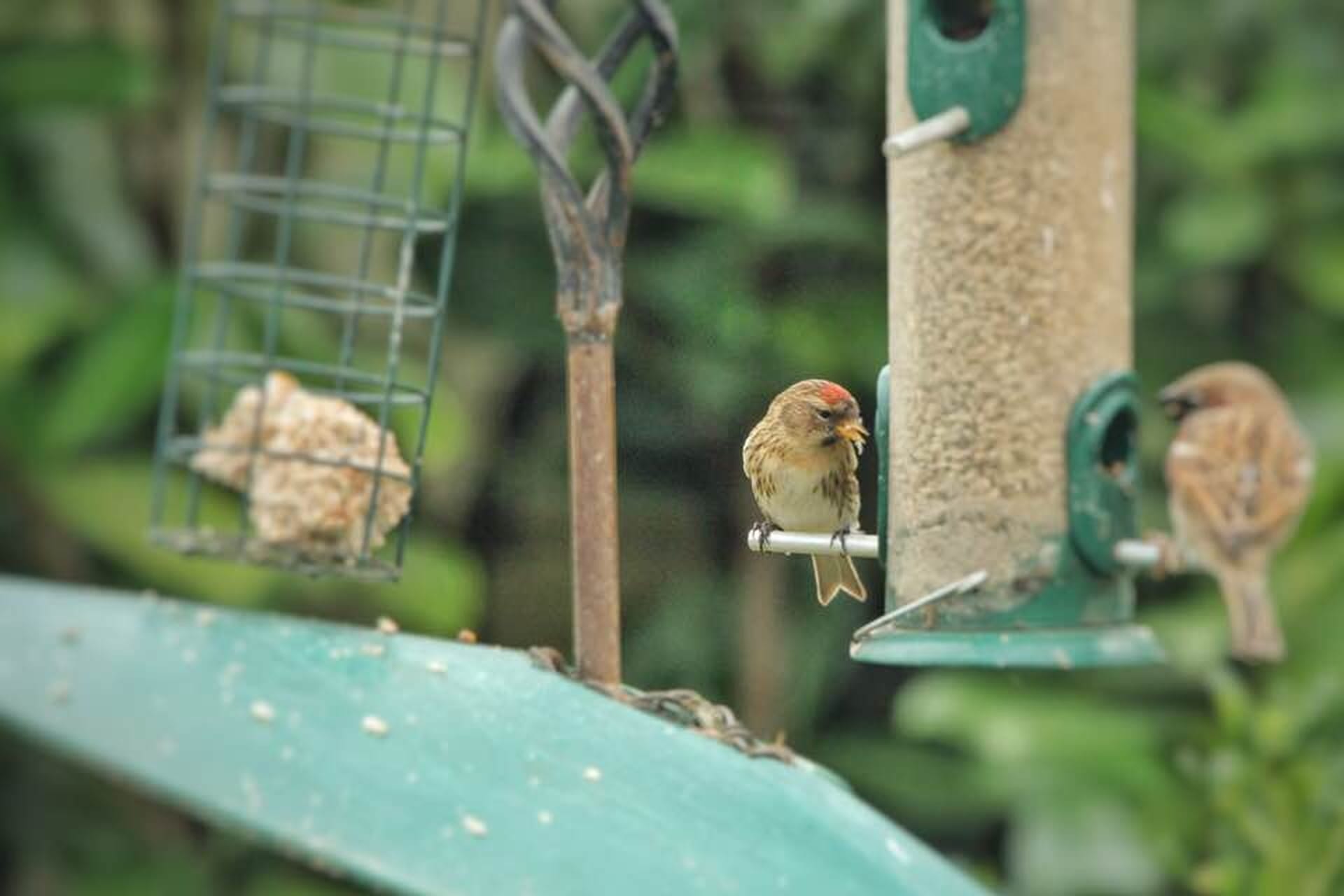
It was an exciting day when Redpolls came into the garden
I've had problems with squirrels breaking my feeders, but a large baffler seems to have worked. After three years they still haven't worked out how to get over it, but it does have to be placed at the right height otherwise they can jump over it when it is too low. If you are going to try one and the squirrels are getting over it, then keep moving it up an inch or two until it works.
The feeders I have found to be the best are plastic tubes with metal perches where everything unclips for easy cleaning.
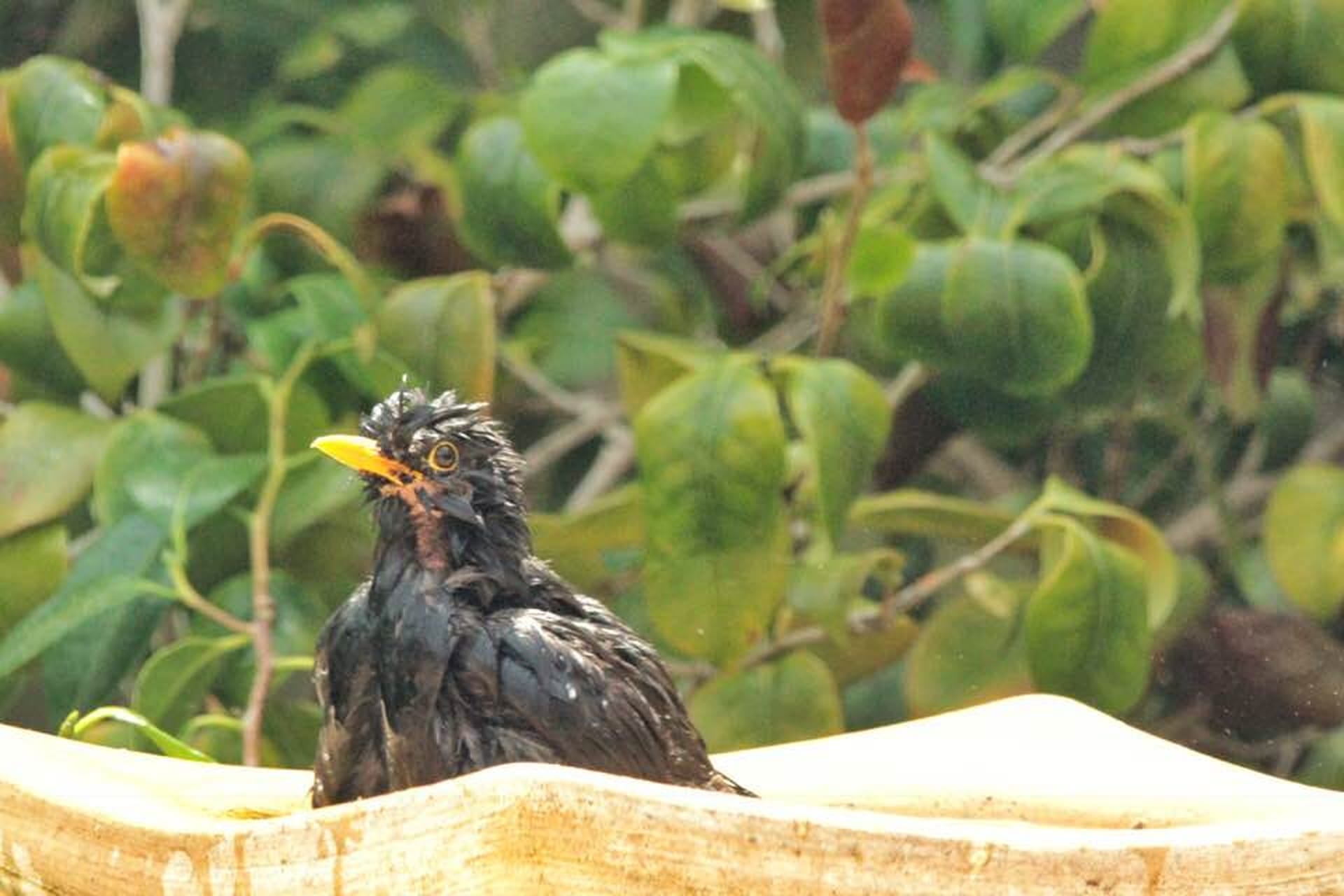
All birds love water, here is a male blackbird really enjoying a bath in a shallow bird bath in our garden
After eating all those dry seeds, birds will really appreciate a nice bowl of water. They also like to bath in it which helps to keep their feathers in top condition. They really don't care how fancy the bird bath is, but it is important to remember to keep it clean to cut down on the spread of diseases.

A Blackcap not to happy to have a Chaffinch watching him bath
Birds carry diseases that can be passed to other birds when they are in close proximity to each other, but especially when they are eating from the same source the disease can get left behind on the food or in the water. Reduce the risk of spreading diseases by keeping everything clean. Clear away any leftovers and move feeders to different places in the garden on a regular basis, giving the ground time to recover from all that foot fall, poop and dropped seed.
Birds will use bird boxes in the winter to get out of the cold, wind, rain and snow. In the spring they will be used for nesting. Trees and shrubs also make good places for birds to nest.

A Blue Tit helping to keep the caterpillar population in the garden under control
Providing the right plants that will provide birds with natural food is ideal. I often have Goldfinches visiting our cornflowers for the seeds they produce. Waxwings love the Rowan tree berries. Sparrows, blackbirds, wood pigeon and the majority of the tit family enjoy pyracantha berries, although I've noticed the yellow berry variety is getting ignored, whereas the red and orange berry bush are cleared quickly.
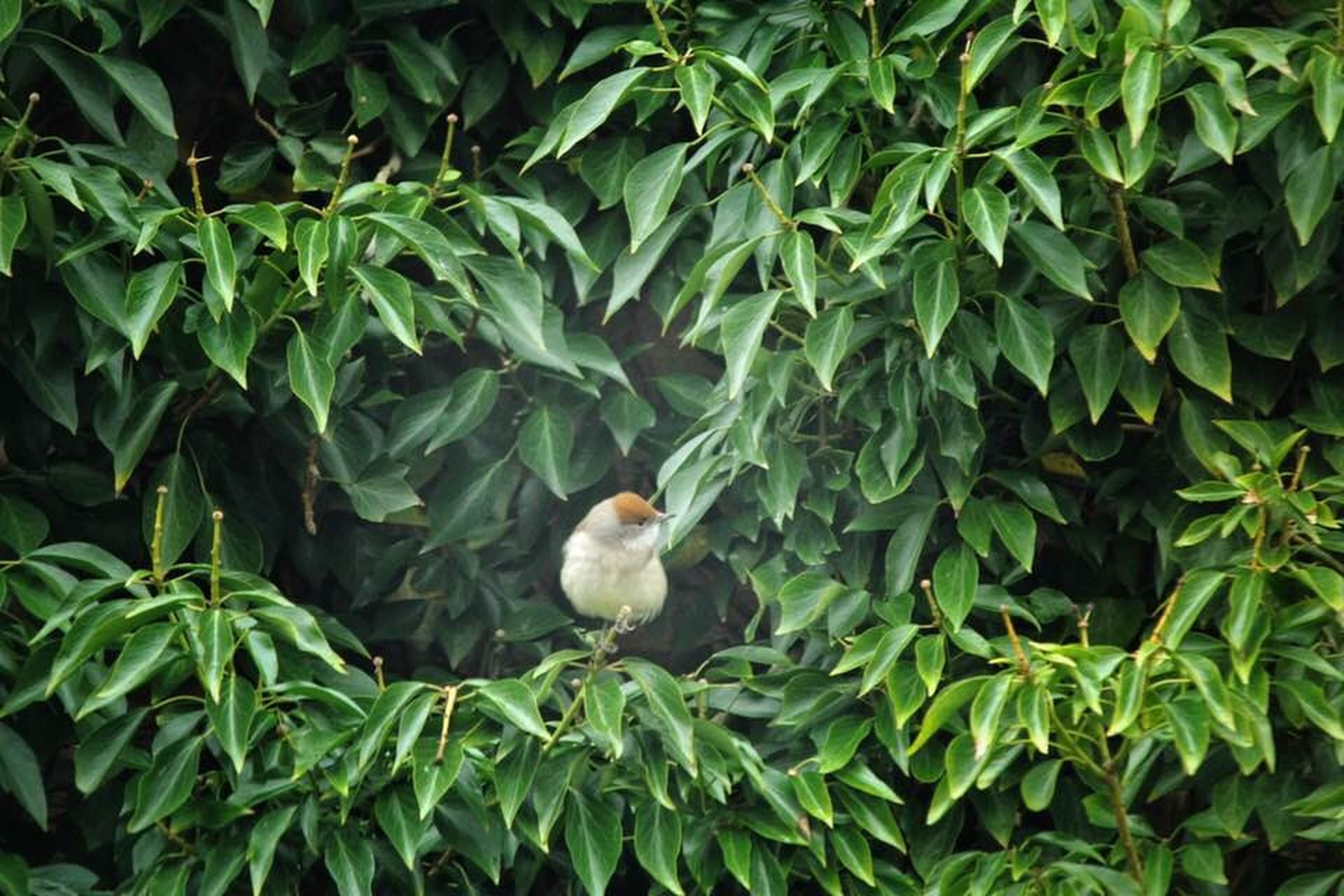
Here is a female Blackcap visiting our ivy, they love the berries as well as all the insects that hide in there
Then there are the birds such as wrens that like eating bugs, although most birds will feed insects to their young. Providing some untidy areas and pilling logs in a corner, having ground covering plants and long grass gives spiders, moths and other insects places to hide.

My husband thought I'd won money when I came running into tell him we had an Emperor Moth caterpillar in the garden. I added my finger for size comparison
Inviting wildlife into your garden means you have to start being a bit more thoughtful about the way you deal with weeds. I've been told on many occasions that weeds are a flower that's in the wrong place so I should embrace them... We all know man-made chemicals aren't a good thing so try and find alternatives if you wish to be weed free, pulling them out by their roots, burning them and taking off flower heads before they go to seed can help reduce their numbers.
I embrace weeds in my lawn because they are food for many insects. I use hot water to remove them from paths and the driveways, this lets the neighbours know the part that is a bit wilder is intentional.
Have an area where you don't cut the grass until late autumn, this will give insects and moths somewhere to hide and in turn provide birds with more natural foods.
Dropped leaves in the autumn are great at enriching the soil, they also bring worms to the surface. You'll often see Blackbirds throwing leaves out of their way as they hunt for worms and other insects.
Your garden doesn't have to look like a nature reserve to entice the wildlife in, wildlife like tidy well kept gardens as well, as long as there are bugs, seeds, water, flowers, plants and places to hide and keep warm.
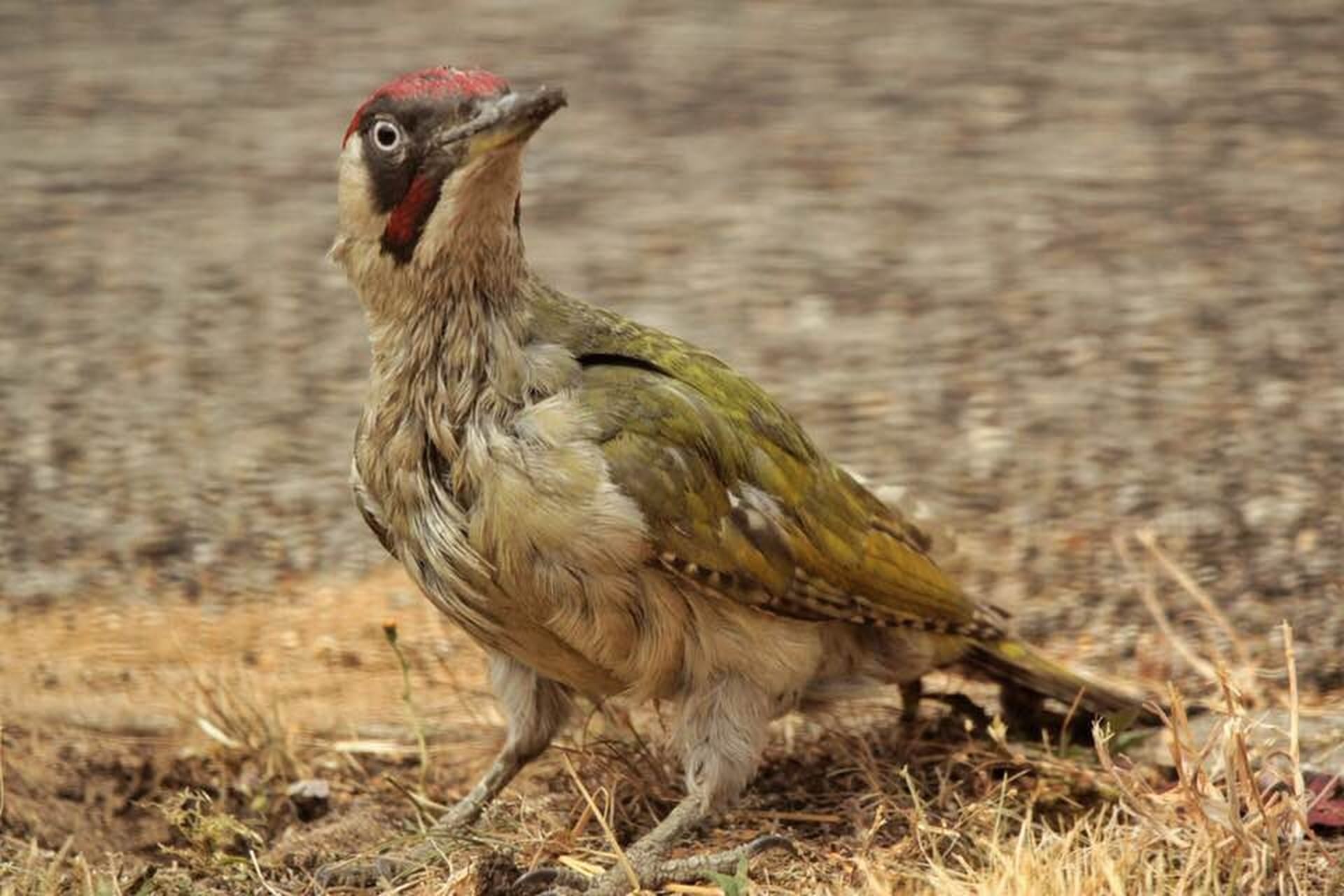
This woodpecker likes to visit the ant nests in the front garden, we also have a Greater Spotted Woodpecker visiting the peanut feeder in the back garden
Nothing in Basket!
